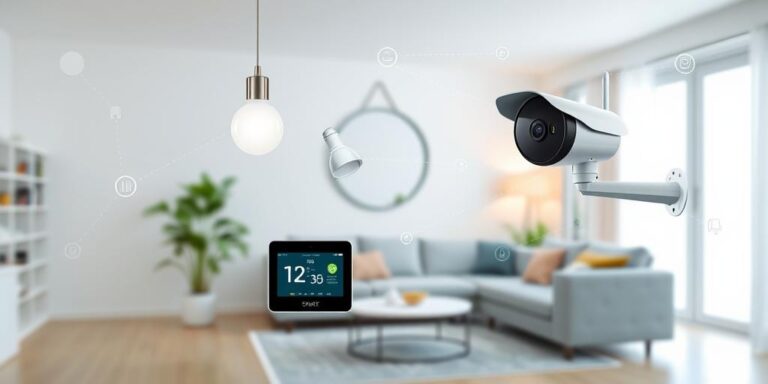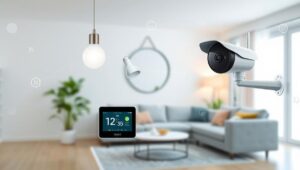The Role of Matter and Other Standards in Smart Home Interoperability (2025)
The smart home landscape is rapidly evolving. By 2025, interoperability will be crucial for widespread adoption. Several standards are vying for dominance, with Matter leading the charge. This post examines the role of Matter and other standards in achieving seamless smart home experiences.
The Current State of Smart Home Interoperability
Today, smart home devices often operate in silos. Different ecosystems, such as Apple HomeKit, Amazon Alexa, and Google Home, use proprietary protocols, creating compatibility issues. Consumers face challenges when trying to integrate devices from different manufacturers into a unified system. This fragmentation hinders the full potential of smart home technology.
Matter: A Unifying Force
Matter, formerly known as Project CHIP (Connected Home over IP), aims to solve interoperability issues. It is a royalty-free, open-source connectivity standard that enables devices from different ecosystems to communicate seamlessly. Matter uses IP-based networking, allowing devices to connect over Wi-Fi, Thread, and Ethernet. Key features include:
- Multi-Admin Control: Allows multiple ecosystems to control a single device.
- Simplified Setup: Streamlines the device onboarding process.
- Enhanced Security: Incorporates robust security measures to protect user data.
- Wide Adoption: Supported by major players like Apple, Amazon, Google, and Samsung.
Other Relevant Standards
While Matter is gaining momentum, other standards continue to play a role in the smart home ecosystem:
- Zigbee: A low-power, low-data rate wireless standard commonly used in smart lighting and sensors. Zigbee devices often require a hub to connect to the internet.
- Z-Wave: Another low-power wireless standard focused on home automation. Z-Wave offers strong interoperability within its ecosystem but is less open than Matter.
- Bluetooth: A widely used wireless technology for connecting devices over short distances. Bluetooth is suitable for applications like smart locks and audio devices.
- Wi-Fi: A prevalent wireless networking standard that provides high-bandwidth connectivity. Wi-Fi is suitable for devices that require more data, such as security cameras and smart TVs.
The Future of Smart Home Interoperability in 2025
By 2025, Matter is expected to become a dominant standard, driving greater interoperability across smart home devices. However, other standards will likely continue to coexist, catering to specific use cases and market segments. The key trends to watch include:
- Increased Matter Adoption: More manufacturers will integrate Matter into their devices, expanding the ecosystem.
- Bridging Solutions: Solutions that bridge existing Zigbee and Z-Wave devices to Matter will become more common.
- Enhanced User Experience: Simplified setup and control will improve the overall user experience.
- Focus on Security: Ongoing efforts to enhance security and protect user privacy will be critical.
- Ecosystem Collaboration: Greater collaboration among ecosystems will enable seamless integration of devices and services.
Challenges and Considerations
Despite the progress, challenges remain:
- Legacy Device Support: Integrating older devices that do not support Matter may require additional hardware or software solutions.
- Standard Evolution: As technology evolves, standards need to adapt to support new features and use cases.
- Security Threats: The interconnected nature of smart homes makes them vulnerable to security threats, requiring ongoing vigilance.
Conclusion
Smart home interoperability is essential for creating a seamless and user-friendly experience. Matter holds the promise of unifying the smart home ecosystem, but other standards will continue to play a role. By 2025, a combination of Matter and bridging solutions is expected to drive greater interoperability, enabling consumers to build truly connected homes.




